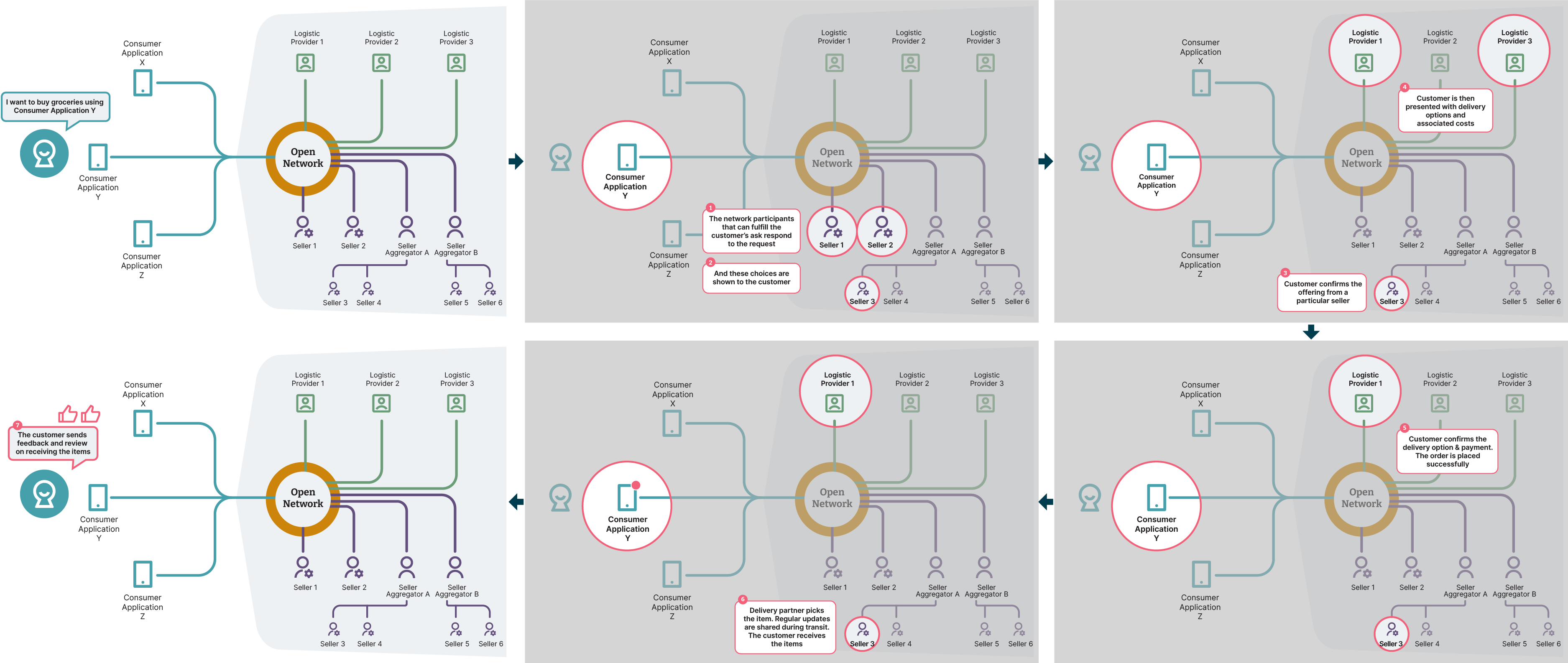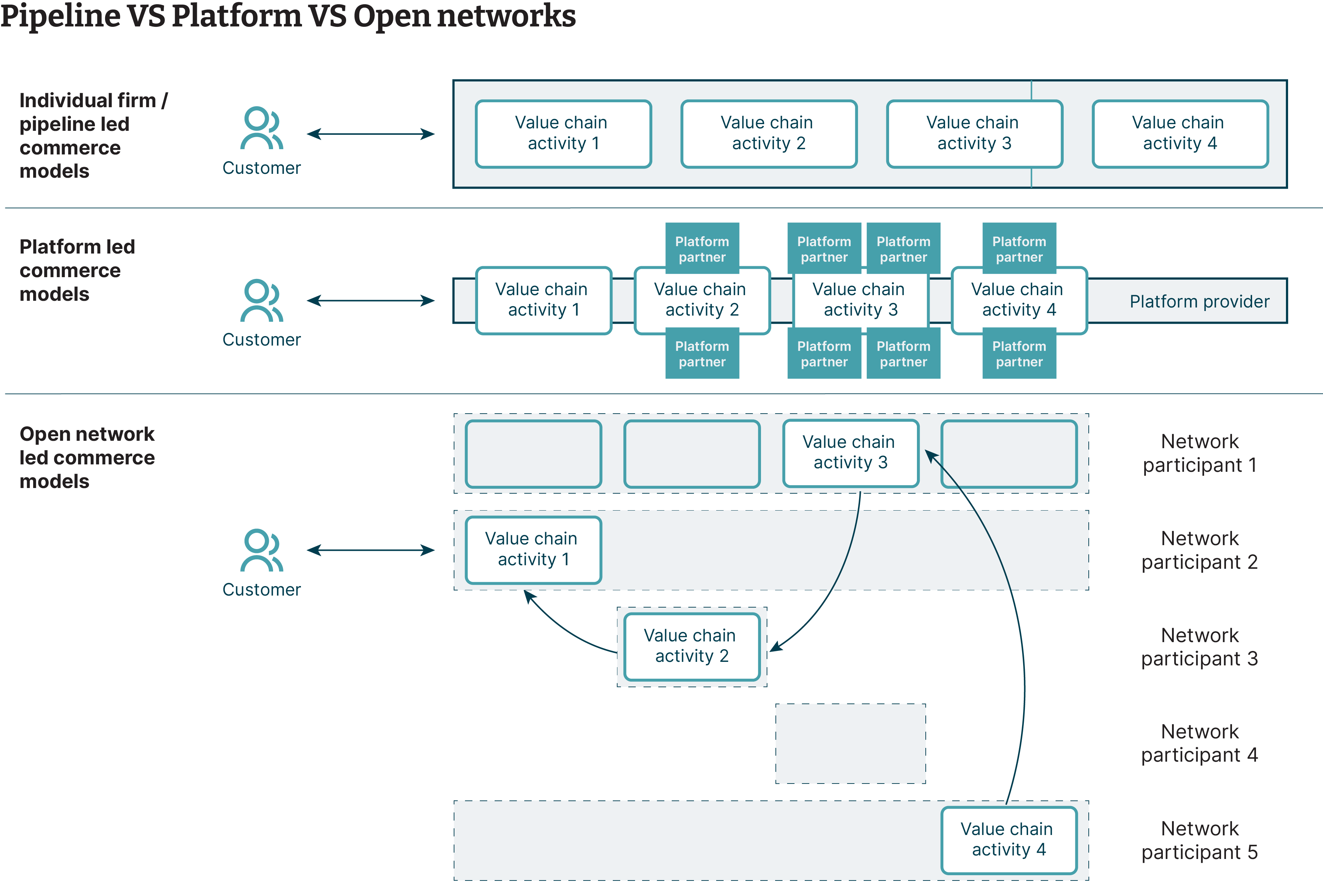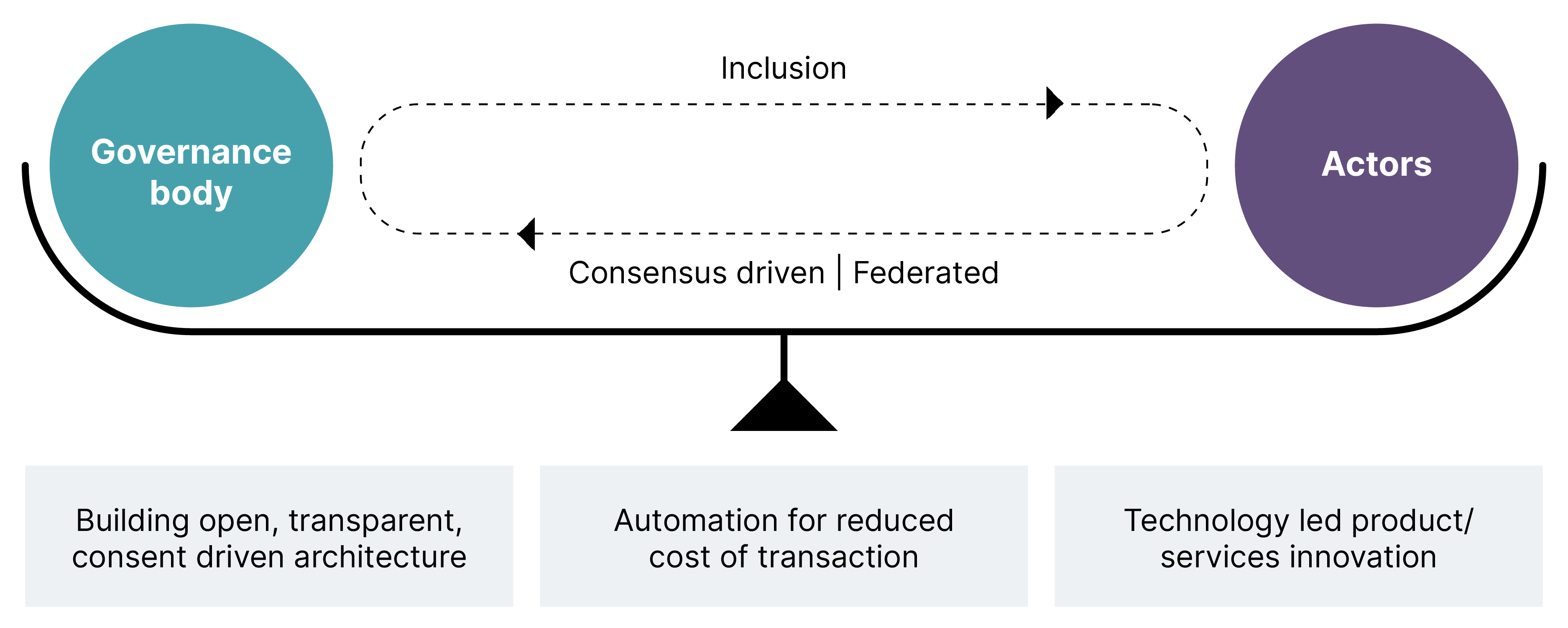The new internet is shifting focus both in terms of technology and user thinking. Decentralized architectures, resilience, reliability, cost-effectiveness and security are becoming top priorities. Also, new web-based ecosystems are transitioning from platform-centric to protocol-centric designs. The fundamental push for this change comes from sovereign platforms that the modern web is teeming with. Before we understand the shift, let’s explore the evolution of platforms a little.
The era of sovereign platforms
The internet and digital technologies allowed platforms (like X, Meta and LinkedIn) to scale exponentially, attracting actors/users (such as platform owners, service providers, content creators and consumers) like never before.
On the other hand, actors gained great benefits, too — access to information, shopping, instant delivery, marketplaces and so on. This convenience and ease of use were the initial forces behind the platform revolution. Now, the new value comes from collaboration and interaction—an innate need of humans!
The iPhone saga...
The iPhone is an excellent example of how platforms helped an incumbent amidst the giants thrive and become a supergiant in a short span of a decade. Both developers and actors grew, creating value for each other and for the whole ecosystem. (The App Store offered 1.4 million apps around the iPhone, generating $25 billion for its developer community by the end of 2015!)
As a corollary, "In the internet economy, the larger the network, the better the matches between supply and demand, creating greater value that attracts more actors, adding still more value—a virtuous feedback loop that creates monopolies," writes Alstyne.
Nobody anticipated monopolies would emerge from the open protocol stack of the internet! But here we are and this throws open a number of concerns.
- Privacy and security: As the platforms grew in size, they became big data and metadata reservoirs for and of their users, spawning great concerns around security, privacy, content moderation sanctions, shadowbanning, inadequate development and deployment of policies.
- Limitations on competitiveness: Larger platforms are hubs of digital trade, turning into market operators. In most large platforms, new sellers feel claustrophobic as they lose their choice. This increases operator impact and limits the competitiveness of the economy.
- Unreliable digital identities: Actors' digital identities are critical for any enterprise and economy. The digital identity frameworks of today are "centralized, suffer from a lack of trust, aren't portable, and don't provide users with control," according to a Forrester analysis published on January 2, 2020.
- Very high switching cost: It is incredibly difficult for actors to port to another platform without giving up the value they have built on existing platforms. To say nothing of user exploitation by the platform owners.
In response, especially in the world of social media, Mastodon-like self-hosted, independently-running nodes with their own rules of privacy, code of conduct and moderation policies, have begun flourishing. However, Mastodon is an exception, at least today.
Therefore, users who have made the platform their mainstay are stuck with one of two choices,
Continue staying on the platform and abide by the platforms’ rules and limitations
Get out of the platform and in the process lose all the value (such as number of followers, a rich business history) created over time
Fortunately, a third option is emerging — turn back, develop, deploy and use open-protocol networks.
Protocols over platforms
In ICT, a protocol describes specific rules, guidelines and instructions for creating a compatible interface. Tim Berners-Lee introduced the World Wide Web concept in 1989 with three primary protocols: HTML, HTTP, and URL. Typically, protocols are open — anyone interested could use them independently and freely, without regard for legal issues. WiFi, Bluetooth, and GSM are popular examples of open protocols today.
As an alternative to the various purposes we’re using platforms today, here is what an open protocol ecosystem (Illustration 1) might look like:


Flow of value: Pipeline v. platform v. network
So, what does the flow of value look like across these three things? Let's take a look:


As you can see, the individual pipeline is relatively straightforward. As we move from platform commerce model to an open network, the network expands, the sources of value become much richer. This obviously has significant benefits for businesses, allowing them to do more for their customers.
The table below details some of the differences.
| Platforms ecosystems | Open protocol ecosystems | |
| Network architecture | Centralized and oligopolic |
Decentralized and interoperable |
Close-ended, proprietary |
Open-ended, public |
|
Business-centric |
Community-centric |
|
Actors can start using the ecosystem straight away after login (Fee for certain content) |
Actors need to build the ecosystem on top of the protocol network first before using it (Free) |
|
| Control | Existing platforms have mitigation strategies for poor service, return of goods/money, etc. |
Due to its nascent stage, mitigation strategies are under development |
Platform-owner decides the policies for content moderation (especially in the social media) |
Actor decides and creates personalized filters for content moderation |
|
Platform owners own the content generated in the ecosystem |
Actors who create the content own it in the ecosystem |
|
Based on profit-centric values decided by platform owners |
Based on community-centric values decided by the community |
|
Ecosystem strategies are decided by platform owners |
Ecosystem strategies are decided by community actors |
|
Operator-led network |
Facilitator-led network |
|
If monopoly persists then it can rival with the national interests |
Minimal government control |
|
Controls the ‘store of value’ |
Facilitates the ‘flow of value’ |
|
Actor Behavior |
Platform stickiness doesn’t allow the actors to switch the platforms easily |
Actors are free to choose, join and leave the ecosystem with ease without losing anything |
Over time actors trust the ecosystem and carry on with economic transactions |
The trustworthiness of economic transactions is yet to be tested |
|
Less business-friendly for small business owners |
More business-friendly for small business owners |
When should protocols be considered?
Platforms have their own place in the modern digital ecosystem. However, here are a few reasons where a protocol-based ecosystem might perform much better.
- Democratization of business: Protocols should be considered when it's important to cultivate a multiplayer business landscape that is inclusive and accessible to everyone
- Open Standardization: A protocol-based approach must be considered where there is a strong probability of a single commercial entity defining and controlling Industry standards.
- Inclusion: Platforms will look to maximize their profits. In this endeavor their primary focus would naturally remain on the educated, prosperous and urban population. Protocols allow for players to demonstrate ‘frugal innovation’ and reach population segments untouched before.
Protocol ecosystems in action: Open Network for Digital Commerce (ONDC)
India’s Open Network for Digital Commerce (ONDC) is an emerging protocol-based ecosystem with great potential. It is an open network based on open protocols that enable location-aware local commerce across half a million micro, small, and medium enterprises across India. It opens up the opportunity to transform India's $38 billion digital commerce market through community-led and participant-centric development. Its differentiating features are:
Built based on open interoperable specifications (the Beckn protocol) consisting of APIs, data models, reference architectures, transaction mechanisms and global standards for the creation of decentralized networks
Facilitator-led (and not operator-led) network with minimum government interference
Decentralized (in terms of participants, facilities, transactions and control) network
Interoperable (liberated participants in terms of multiple protocols and platforms) network
Innovative and evolving (regular upgrades in protocols, networks and services) network
Network independent of the platform or application used by buyers and sellers
Force multiplier for all the stakeholders, creating an open playground for supply-chain and the unbundling of microservices
Multiple services can be offered to retail, wholesale, mobility, food delivery, urban services, etc.
How to build a successful protocol ecosystem
We provide a three-pronged model for a protocol-based ecosystem, described below. We call it the tensegrity model because the system will remain adaptable, resilient and scalable with the right amount of tension between the pillars.
- Pillar one — governance body: Optimum involvement of all stakeholders including policy creators is key. This governance body lowers the barrier for competition creating inclusion and an equitable space for all actors.
- Pillar two — performers as actors: Actors such as suppliers, customers, sellers, merchants, wholesalers, logisticians, banks, and other financial organizations need to operate well together. For example, for the inter city bus mobility network, the players are coming together for drafting the spec unlike being created top down by the governance body alone.
- Pillar three — technology: Technology is the enabler for scaling this protocol ecosystem. Data plays a crucial role. With a protocol approach, all actors have fiduciary responsibility for the data, which naturally and realistically belongs to the user.


This network would be powered by consent driven architecture where the “user” would be in ultimate control of their data for e.g. the transaction history of all the transactions processed via the network. There would be focus on reducing the cost of transactions. For example, ONDC would likely have an automated reconciliation and grievance settlement service. Another interesting example could be - embedding terms and conditions of the protocol ecosystem in every transaction payload thus allowing any new entrant on the network to be your potential business partner.
This is the foundational block on which technology led value added services would be created.
Disclaimer: The statements and opinions expressed in this article are those of the author(s) and do not necessarily reflect the positions of Thoughtworks.


















